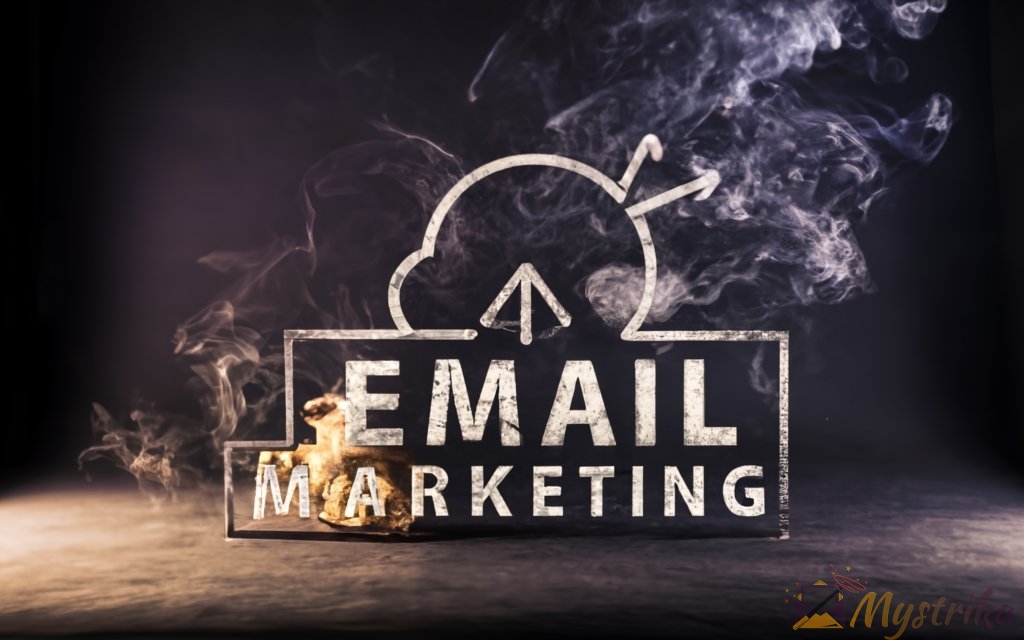Email marketing remains one of the most effective digital activities for engaging customers and driving revenue. For businesses using Salesforce, integrating email capabilities creates a powerful one-two punch.
This comprehensive guide explores the email marketing potential within Salesforce. Learn how leaders activate CRM data to send targeted communications that nurture relationships. Discover tips to create high-converting email content, automation workflows, and metrics-based optimization – all within Salesforce.
Whether you’re an email marketing specialist, CRM admin, or Salesforce enthusiast, use this guide to unlock the strategies and tools for email success. Let’s dive in and explore how Salesforce provides a robust platform for sending the right messages to the right people at the right time.
Why Email Marketing is Key for Salesforce Users
For businesses using Salesforce to manage their critical customer data and workflows, email marketing is an indispensable tool for engaging customers and driving growth. The marketing automation and analytics capabilities native to Salesforce make it easy to create targeted email campaigns to nurture leads, promote products, share company news, and more.
Here are four key reasons email marketing is a must-have for any Salesforce-centric marketing stack:
Leverage your existing Salesforce data
The #1 benefit of email marketing with Salesforce is the ability to maximize the value of data you already have. Salesforce captures extensive customer data from both sales and marketing efforts. Email marketing lets you activate this data to deliver personalized, relevant messaging to different customer segments.
For example, you can create emails targeted to:
- New customers announcing product releases or events
- Existing customers on their purchase anniversary or birthday
- Customers who abandoned their cart reminding them of items left behind
- Prospects who downloaded an asset nurturing them with more content
This kind of personalization results in 7x higher conversion rates compared to generic bulk emails. With the data already in Salesforce, creating these hyper-targeted campaigns is quick and easy.
Personalize content and improve relevancy
Email marketing through Salesforce also enables easy merging of dynamic content using merge fields. This allows personalized elements like:
- First name
- City
- Previous purchases
- Number of support cases
Dynamic content results in 18.5% higher open rates and 32.5% higher click rates. More importantly, it shows customers you understand their needs and preferences.
With Salesforce storing every customer interaction and data point, marketers can build emails hyper-relevant to each recipient. This improves engagement and strengthens customer relationships.
Integrate with marketing automation workflows
Marketing and sales teams can align better by integrating Salesforce-triggered emails into customer journeys. As leads move through the funnel, you can set up automated emails for key events:
- New lead acquired
- Lead nurtured and qualified
- Opportunity created
- Customer renewal
This level of marketing and sales alignment generates 208% more revenue than non-aligned teams.
Track engagement and optimize campaigns
With native Salesforce tools like Einstein Engagement Scoring, marketers get a complete view of email campaign performance. You can track:
- Open and click rates
- Conversion rates
- Bounce and opt-outs
- Engagement velocity
These insights enable optimization and refinement of target segments, content, send times, and more for continual improvement.
For example, you may find emails sent Tuesday afternoon have a 10% higher open rate. Or that prospects with 5+ page views convert at 2X rates. This data-driven approach results in email marketing programs that continually get better.
More reasons email marketing and Salesforce go hand-in-hand
Beyond those four primary benefits, leveraging Salesforce for email marketing offers additional advantages:
- Existing brand consistency – natively designed emails match your Salesforce instance’s branding so no additional design work needed
- Built-in compliance – email templates include required unsubscribe links, physical addresses, etc. reducing legal risks
- Easy cross-channel coordination – align email initiatives with ads, webinars, direct mail seamlessly with shared Salesforce campaign tracking
- Lower costs – eliminate the need for third-party email tools and focus spend on Salesforce licenses which also support broader business goals
Key takeaway
For companies using Salesforce, email marketing capabilities are too valuable not to take advantage of. With minimal additional spend, sales and marketing teams can unlock more value from existing CRM data to drive highly targeted, automated, and optimized email campaigns.
This results in superior customer experiences, increased conversions, and ultimately higher revenue powered by the Salesforce-email marketing combo.
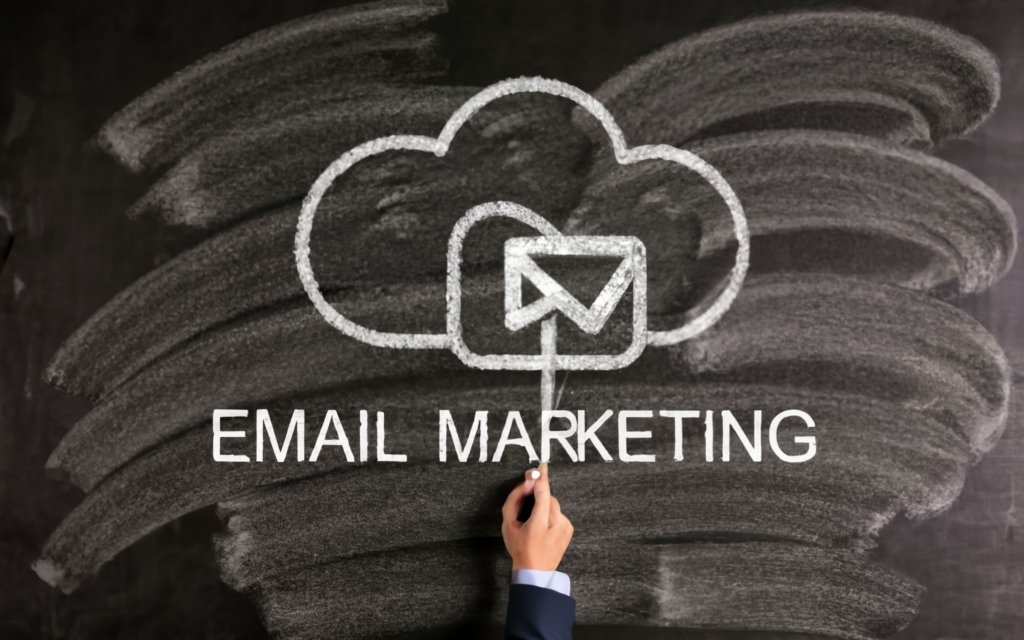
Setting Up Salesforce for Email Marketing Success
With the right setup and configuration, Salesforce provides a robust platform for executing targeted, automated email marketing campaigns. Follow these best practices to get your Salesforce instance ready for email dominance.
Understanding your audience with Salesforce data
The first step is leveraging Salesforce’s data on your leads, contacts, and customers. The CRM captures extensive demographic, firmographic, and behavioral data through both marketing and sales activities.
Analyze this data to identify buyer personas, high-value customer segments, and behavioral trends. Build custom reports and dashboards to visualize metrics like:
- Lead source
- Industry
- Purchase history
- Support cases
- Page views
Segment your audience into logical groups based on the attributes that matter most. For example:
- Industry type
- Lead source
- Customer lifetime value
- Purchase recency/frequency
- Content downloads
This provides the foundation to tailor content and develop relationships through relevant, personalized emails.
Bringing in data from external sources
While Salesforce provides comprehensive data, you can enrich it further with external sources like:
- Website analytics – traffic, conversions, etc.
- CRM and ecommerce platforms
- Social media analytics
- Third-party data enrichment tools
Integrate this data into Salesforce objects using tools like Salesforce Data Loader.
With a complete data set including online and offline channels, you gain an omnichannel view of your audience. This enables segments and personalization like:
- Visitors from LinkedIn in high-tech industry
- First-time site visitors in 30 days
- High social followers and low email engagement
Structuring data with campaigns, lists, and data extensions
Now it’s time to organize your data for email marketing execution. Within Salesforce, you can structure your audience data using:
Campaigns – For segmenting based on initiatives like promotions, events, content downloads etc.
Lists – For managing large volumes of subscribers with basic attributes and preferences.
Data extensions – For complex data models with external imports and custom fields.
Choose the right structure based on your email program size, data points, and types of segments needed. For example:
- Small list (<500K) = List
- Large list (>500K) = Data Extension
- External data import = Data Extension
With your data structured, you have the flexibility to build dynamic segments across multiple dimensions.
Managing subscriber opt-outs
Respecting subscriber preferences is an email marketing must. Make opt-outs easy by including unsubscribe links in all emails.
In Salesforce, the Email Opt Out field on Contacts controls subscriber status. Set up validation rules so marketing users cannot remove opt-outs unless subscribers re-opt in themselves.
Create an exclusion segment in your email tool populated by the Email Opt Out field. Configure all emails to exclude this segment, preventing unwanted sending.
Also use the HasOptedOutOfEmail global merge field to show dynamic unsubscribe links to opted in subscribers only. This protects subscriber privacy and builds trust.
Key takeaways
The steps above provide a blueprint for configuring Salesforce for email success:
- Analyze data to understand your audience
- Enrich data from external sources
- Structure data into campaigns, lists, and extensions
- Enable easy subscriber opt-out management
With this foundation, you can develop sophisticated email programs that deliver value and promote customer loyalty. Automated setup is also available through packages like Salesforce Marketing Cloud Quick Start.
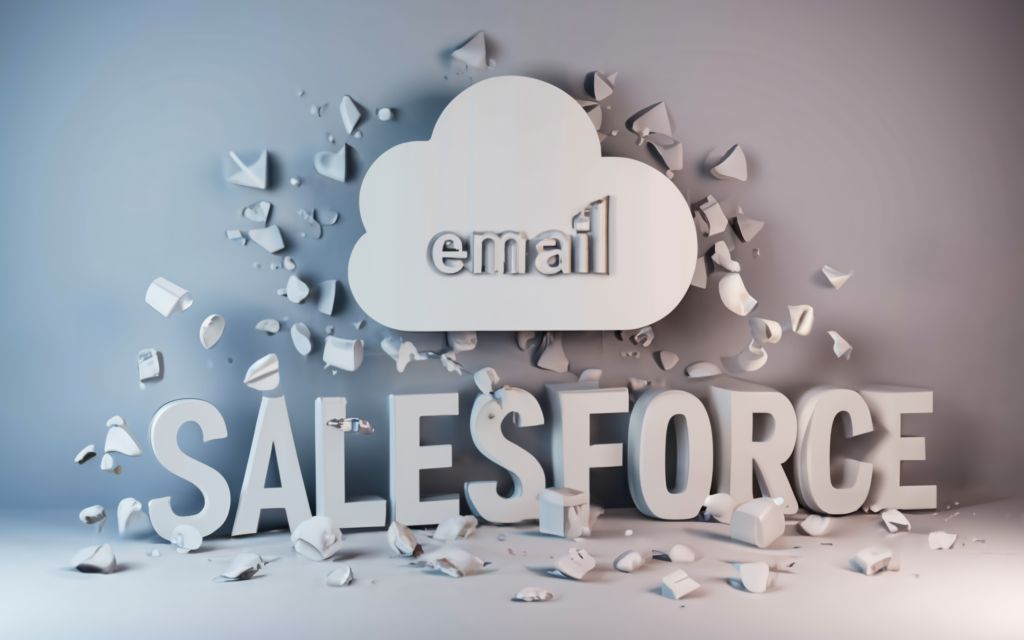
Creating Effective Email Content in Salesforce
Creating compelling content is key for email marketing success. With built-in tools and personalization powered by data, Salesforce makes it easy to craft targeted emails your audience loves.
Best practices for crafting compelling email content
Follow these best practices when developing email content for your Salesforce campaigns:
Lead with value – Offer practical tips, exclusive deals, or free tools rather than overt sales pitches. Use the 80/20 rule: 80% valuable content, 20% promotion.
Speak to their needs – Segment your list by persona. Understand their pain points, goals, and interests. Then tailor content specifically to address those needs.
Education first – Especially for cold outreach, lead with education rather than promotion. Establish your expertise and provide value upfront.
Write great subject lines – Given that 35% of email opens are driven by the subject line, make yours irresistible. Use specific data points, urgency, social proof, or curiosity to hook readers.
Know your audience – Adopt their preferred tone, terminology, and depth of information. Review past email performance and surveys to refine your approach over time.
Mobile-optimize – Over 56% of emails are opened on mobile. Use responsive design, big fonts, and a concise writing style.
Test and iterate – Try different approaches and dissect the data to continually improve email content. Testing subject lines, design variants, offers, etc. helps you learn what resonates.
Personalizing content with merge fields and dynamic content
Personalization improves email engagement and conversion rates. With Salesforce, you can easily incorporate dynamic content using:
Merge fields – Insert data like first name, company, or purchase history. For example:
“Hi {FirstName}, per our last conversation about {LeadSource}, I wanted to share…”
Dynamic content – Vary sections or components based on data or user actions. Such as:
Showing product recommendations based on past purchases.
Changing the offer based on buyer persona or lead score.
Relevant content personalization boosts click-through rates by over 50%.
Designing mobile-friendly, branded email templates
Email Studio provides professionally designed templates that are mobile-ready out of the box. Easily customize them by:
Adding brand assets – Upload your logo, fonts, colors, and more under Email Studio Branding to maintain a consistent brand experience.
Crafting the layout – Use the drag-and-drop editor or HTML editor to perfect the structure and content flow.
Optimizing images – Compress and resize images for fast loading. Use responsive design to show/hide images by screen size.
Testing across devices – Preview on different device sizes using the email preview tool and litmus to ensure consistency.
With templates that reflect your brand and adjust for smaller screens, your emails deliver the ideal experience regardless of device.
Tools for building emails – Content Builder, Einstein Content Selection
Leverage Salesforce’s built-in tools to create emails quickly.
Content Builder – Build beautiful, responsive emails with an intuitive drag-and-drop WYSIWYG editor. Easily manage reusable content blocks.
Einstein Content Selection – Let AI choose the best-performing design and content for each contact based on their profile and past engagement.
Email Studio – Design basic emails with a templates, images, dynamic fields and sections for your brand.
Lighting Web Components – Build interactive, engaging emails using components like banners, forms, product cards.
With user-friendly options for simple to advanced emails, Salesforce enables any marketing team to develop creative and effective content.
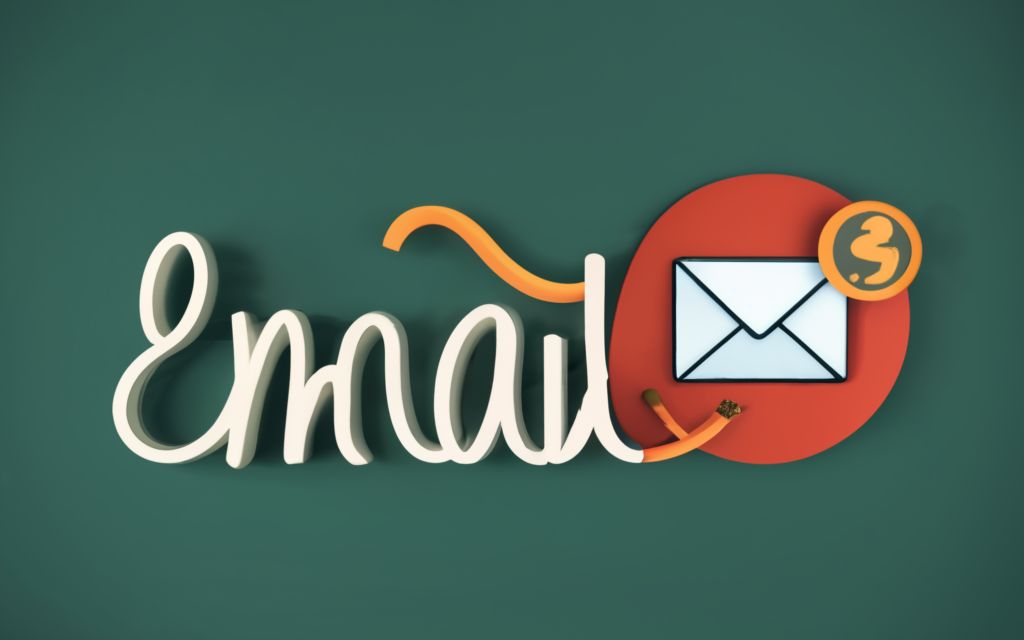
Automating Your Salesforce Emails
Marketing automation is key to leveraging Salesforce’s capabilities. Workflows, process builder, and flow allow you to set up triggered and scheduled emails that run automatically based on data and events.
Setting up automated email workflows with Workflow, Process Builder, Flow
Salesforce includes several tools to automate marketing emails:
Workflow – The Workflow builder provides an easy drag-and-drop interface to configure rules and actions that trigger emails. For example, sending a discount code when a lead hits a certain score threshold.
Process Builder – This tool offers more advanced logic with conditions evaluated in a specific order. Use processes to trigger complex multi-step email flows.
Flow – The flow designer boasts extensive options for evaluating data, conditions, and user input to activate personalized, automated email sends.
Setting up automation involves:
- Identifying the trigger event – lead created, field update, etc.
- Determining the data conditions – profile attributes, behaviors, etc.
- Configuring email properties – template, recipient, merge fields.
- Activating and testing the automated process.
Common triggers include form submissions, object updates, and schedule-based events. The resulting automated emails can cover use cases like lead nurturing, event follow-ups, renewals, and more.
Configuring trigger-based sends for onboarding, winbacks, etc.
Beyond workflows, Salesforce’s triggered sends allow configuring emails to fire for common scenarios like:
New lead onboarding – Send a preset series of educational and promotional emails when a new lead is generated.
Cart abandonment – Email subscribers who left items in their online cart without checkout.
Winbacks – Re-engage customers with no activity in X days with targeted offers.
Milestones – Acknowledge lead progression, account anniversaries, and other key dates.
Triggered sends are configured right within Email Studio, making it easy to leverage automation with your existing email toolset.
Scheduling and sending recurring newsletters and promotions
Complement real-time triggers with scheduled sends like:
Product updates – Notify customers of new releases and product announcements.
Newsletters – Send a monthly roundup of blog content, tips, and company news.
Promotions – Share new offers, discounts, and events on a regular cadence.
Industry insights – Position your brand as a thought leader with market perspectives and trends.
Scheduling options include setting specific send dates or recurring schedules by frequency (daily, weekly, monthly). This flexibility makes it easy to align email to content calendars and promotion plans.
A/B testing email components like subject lines, content
To continually optimize campaigns, use A/B testing to experiment with:
Subject lines – Compare open rates for urgency vs informational, promotional vs educational, personalized vs generic subject lines.
Content – Test different offers, designs, formats, and calls to action.
Audience – Try automating the same email for different buyer personas or lead scores.
Timing – Determine if day/time impacts email metrics for your subscribers.
Leverage insights from A/B tests to refine your approach and generate ideas for new content experiments.
Key Takeaway
Automating email through Salesforce eliminates inefficient manual processes while enabling data-driven, triggered communications. With the ability to schedule recurring emails and set up workflows based on behaviors, events, and data, marketers can engage customers in a highly personalized manner that nurtures relationships over time. The result is more productive marketing programs and pipeline growth powered by automation.
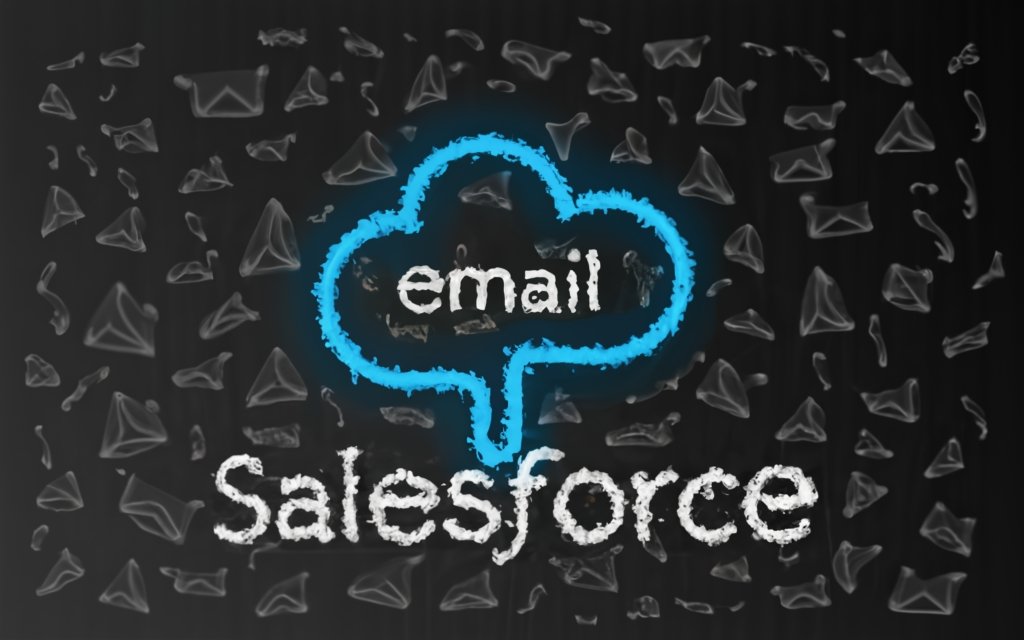
Getting Salesforce Emails Delivered
For email marketing success, your campaigns need to seamlessly reach the inbox. Use these Salesforce email deliverability best practices to optimize placement and avoid SPAM filters.
Monitoring and maintaining email hygiene
Email hygiene reflects the health of your sender reputation, which directly impacts deliverability. Monitor key metrics and nurture your domain’s reputation:
- Review bounce rates weekly – Address errors causing bounces immediately to keep rates low.
- Check abuse reports – Complaints of spam can blacklist your domain. React quickly to resolve legitimate subscriber issues.
- Analyze unsubscribe trends – A spike may indicate relevancy issues. Consider content changes.
- Monitor sender reputation – Services like SenderScore provide domain reputation insights.
- Remove inactive subscribers – Prune recipients who have not opened in 6+ months to maintain list quality.
With vigilance of email hygiene factors, you can avoid damaging your domain credibility with major ISPs.
Understanding factors impacting email deliverability
Beyond hygiene, optimize these key elements influencing email deliverability:
Subscriber engagement – High open and click rates signal relevancy to ISPs. Drive engagement with compelling content matched to subscriber needs.
List quality – Bad or outdated email addresses lead to bounces, hurting deliverability. Maintain accurate records and promptly remove inactive subscribers.
Email authentication – Authentication protocols like SPF, DKIM, and DMARC verify you as a legitimate sender. Deploy them on your domain.
Reputation monitoring – Track your domain’s reputation with ESPs and blacklists. A sudden negative perception can suppress your emails.
Spam filter triggers – Avoid common red flags like spammy keywords, suspicious links, missing unsubscribe links, overuse of images.
Fine-tuning these factors helps your mail reliably reach the primary inbox folder as subscribers expect.
Using tracking tools to optimize deliverability
Robust email tracking provides visibility into deliverability while identifying further optimization opportunities. Key tracking metrics include:
Overall deliverability – The percentage of sent emails reaching subscribers rather than blocked or filtered to spam.
Unique open rate – Measures how engaging your content is to determine if contacts even open your emails.
Click-through-rate – Tracks interactions with key content like product links or CTA buttons.
Conversion rate – For critical actions like free trials, purchases, event sign-ups, etc.
Unsubscribe rate – Gauges whether your audience finds content irrelevant, promotional fatigue, etc.
Engagement velocity – Monitors relationship momentum by email response speed over a sequence.
Gain complete visibility into your email program performance, with tracking enabling you to continually refine campaigns and maximize inbox placement.
Key Takeaway
Email deliverability ultimately determines the success of Salesforce email marketing. By monitoring domain health, understanding deliverability drivers, and leveraging advanced tracking, marketers can optimize campaigns to reach the inbox consistently. This ensures your subscribers receive and engage with your messages as intended. With minimal deliverability obstacles, you can reap the full benefits of applying Salesforce for targeted email marketing.
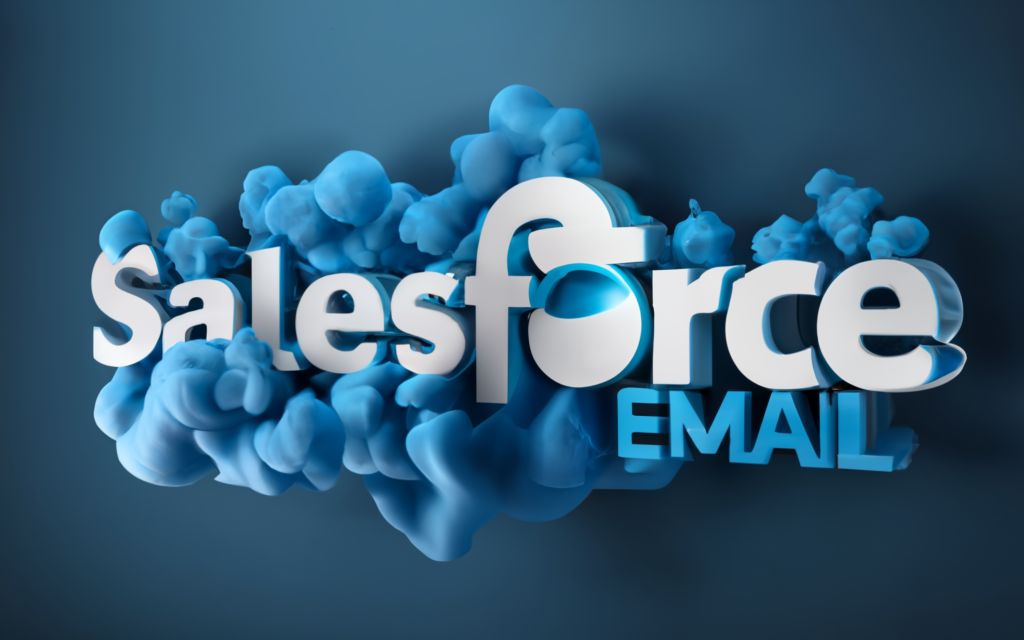
Tracking and Optimizing Salesforce Email Campaigns
Robust analytics and optimization are pivotal to continually improving email performance. Salesforce provides integrated tracking tools to extract insights and refine campaign elements.
Email analytics – opens, clicks, conversions, unsubscribes
Salesforce offers robust email analytics right within Marketing Cloud to monitor engagement and conversion:
- Opens – Unique and total open rates help gauge interest and relevancy of messaging.
- Clicks – Click-through-rates on links and content blocks reveal content resonance.
- Conversions – Conversion events tied to key interactions like downloads, purchases, sign-ups.
- Unsubscribes – The volume and source of opt-outs identifies content or targeting issues.
- Bounces – Hard and soft bounces indicative of list hygiene and deliverability factors.
- Engagement scoring – Scores measuring subscriber interaction intensity help segment and target.
These actionable data points provide objective insights into email campaign performance.
Integrating online and offline data for complete attribution
For complete visibility, integrate email tracking data with offline channels:
- CRM data – Combine with pipeline stages, deal sizes, and lead status.
- Web analytics – Tie email clicks to site actions like file downloads, page views.
- POS data – Match in-store purchases to recent email promotions.
- Call center logs – Link call volume spikes to specific campaign sends.
- Surveys – Gather direct subscriber feedback on email content and frequency.
With a comprehensive attribution view, you gain an end-to-end understanding of email’s impact on customers and revenue.
Using insights to refine audience targeting and campaign strategy
Leverage your data and analytics to actively optimize campaigns:
- Evaluate segments – Analyze performance by segments like buyer stage, lead score, or persona. Refine target groups based on engagement.
- Assess content – Review subject lines, content types, designs, offers etc. driving the highest metrics. Double down on what converts.
- Adjust timing and frequency – Try different days, times, and frequency based on response rate data to find the ideal mix.
- Enhance relevancy – Use lower unsubscribe rates as a proxy for interest to further personalize content.
- Attribution modeling – Quantify email’s influence on pipeline and revenue to optimize investment.
Thanks to Salesforce’s rich datasets and built-in tracking, email marketers have the insights needed to continually test and refine for greater performance.
Key Takeaway
Robust email analytics and segmentation capabilities make Salesforce a premier platform for optimizing campaigns. By tracking an array of engagement metrics and tying them back to both CRM and offline data, marketers can model attribution and precisely target content. This creates a cycle of continual optimization powered by data to maximize email marketing ROI within Salesforce.
Comparison of Key Salesforce Email Marketing Tools
Salesforce offers robust native tools alongside integration with leading third-party email service providers. Here’s an overview of popular options to help select the right email marketing platform.
Built-in tools – Marketing Cloud Email Studio, Content Builder
Salesforce Marketing Cloud includes powerful native tools for email campaigns:
Email Studio – An all-in-one email marketing solution to create, test, send, and track emails. Offers pre-built templates, drag-and-drop editor, dynamic content, and deliverability tools.
Content Builder – Enables easy designing of on-brand, responsive emails with drag-and-drop and HTML editing. Includes content library for managing assets.
Key Benefits
- Tight integration with Salesforce data and branding
- Strong deliverability with built-in hygiene monitoring
- Automation workflows with Process Builder, Flow
- Unified platform requiring no third-party purchase
Considerations
- Less robust segmentation and personalization than some third-party systems
- Lower selection of email templates compared to standalone tools
- Requires Salesforce expertise for advanced configuration
AppExchange Apps – Pardot, ActiveCampaign
Complement Salesforce with popular AppExchange email apps:
Pardot – Salesforce’s official marketing automation app for B2B lead generation and nurturing. Offers segmentation, email workflows, and campaign tracking.
ActiveCampaign – Provides email marketing, automation, CRM, and sales tools for 360-degree visibility. Includes pre-built Salesforce integrations.
Key Benefits
- Specialized email functionality exceeding native Salesforce options
- Pre-configured integrations for rapid implementation
- Leverage investments already made in licensed Salesforce instances
Considerations
- Added costs for additional licenses and customization
- Potential for complex integration dependencies
- Mixed interfaces between Salesforce core and apps
Third-Party Integrations – HubSpot, Marketo, Act-On
Robust standalone email marketing platforms offer deep integration:
HubSpot – All-in-one inbound marketing platform acclaimed for ease of use. Seamless integration surfaces Salesforce data in HubSpot.
Marketo – Part of Adobe Experience Cloud. Bi-directional sync centralizes data. Strong segmentation and email personalization.
Act-On – Combined CRM and email marketing solution focused on mid-market. Custom integration sends Act-On emails within Salesforce.
Key Benefits
- Best-of-breed specialization in email marketing
- More extensive templates, analytics, and toolsets
- Leverage existing investments in platforms like HubSpot
Considerations
- Added costs for platform licenses and custom integration
- Dependent on ongoing vendor integration support
- Data synchronization lags due to external systems
Key Takeaways
Email marketing remains a high-performing channel that engages customers and drives revenue. For Salesforce users, natively integrating email capabilities creates significant strategic advantages.
Some core lessons to take away include:
- Leverage Salesforce’s unified customer data for hyper-personalization and automation based on behaviors, preferences, and journeys.
- Structure your subscriber data within Salesforce using campaigns, lists, and data extensions to execute targeted email programs.
- Use tools like Content Builder and Einstein to create mobile-friendly, on-brand emails with dynamic content tailored to each recipient.
- Automate sends around workflows, events, and schedules to nurture subscribers with relevance and consistency.
- Optimize email copy, segmentation, timing, and messaging through insights from built-in analytics and A/B testing capabilities.
- Choose between built-in, third-party integrated, and AppExchange email tools based on your specific needs.
- Maintain sender reputation and build engagement to maximize email deliverability into the inbox.
By following Salesforce email marketing best practices in this guide, you can develop data-driven campaigns that provide value to customers while advancing sales and marketing goals. The result is a scalable, automated approach to engaging customers across channels while gaining key insights to continually refine and improve performance.
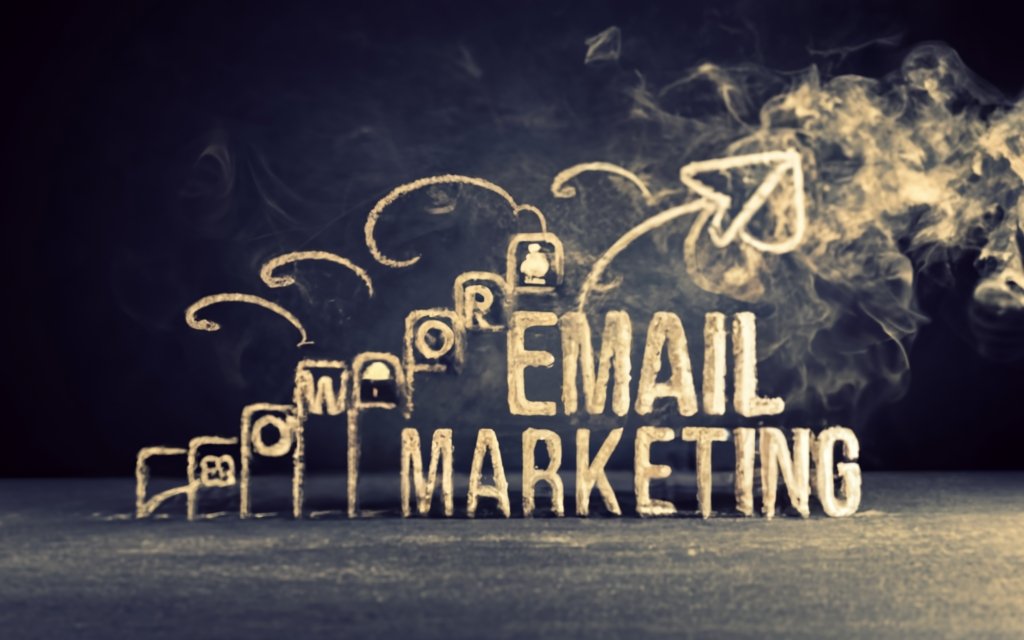
Frequently Asked Questions
Q: What are the main Salesforce email tools?
A: The core email marketing tools within Salesforce are Marketing Cloud Email Studio for campaign creation and execution, Content Builder for email design, and Einstein for optimization. There are also add-on AppExchange apps like Pardot and ActiveCampaign.
Q: Does Salesforce have pre-built email templates?
A: Yes, Email Studio provides a library of professionally designed, brandable templates for most email types – promotions, newsletters, announcements, etc. These can be easily customized.
Q: How do you manage subscriber opt-outs in Salesforce?
A: The Email Opt-Out field on Contact records controls subscriber status. Validation rules can prevent improper opt-out changes. Segment your list based on this field to exclude opted-out subscribers.
Q: What Salesforce objects store email subscriber data?
A: Leads, Contacts, and custom objects like Data Extensions can store subscriber details. Use lists for under 500k subscribers and data extensions for larger volumes or complex data.
Q: How do you personalize Salesforce email content?
A: Use merge fields to dynamically insert subscriber data into emails. Content Builder and Einstein also allow variations of content blocks based on subscriber profiles.
Q: Does Salesforce integrate with third-party email platforms?
A: Yes, Salesforce easily integrates with leading tools like HubSpot, Marketo, and Act-On to centralize data and leverage advanced functionality.
Q: How can you automate Salesforce email sends?
A: Use Workflow, Process Builder, and Flow to configure triggered email sends based on behaviors, events, schedules, and data conditions.
Q: What email metrics are tracked in Salesforce?
A: Open rate, click-through rate, conversion rate, bounce rate, unsubscribe rate, etc. can all be tracked within Marketing Cloud’s analytics.

